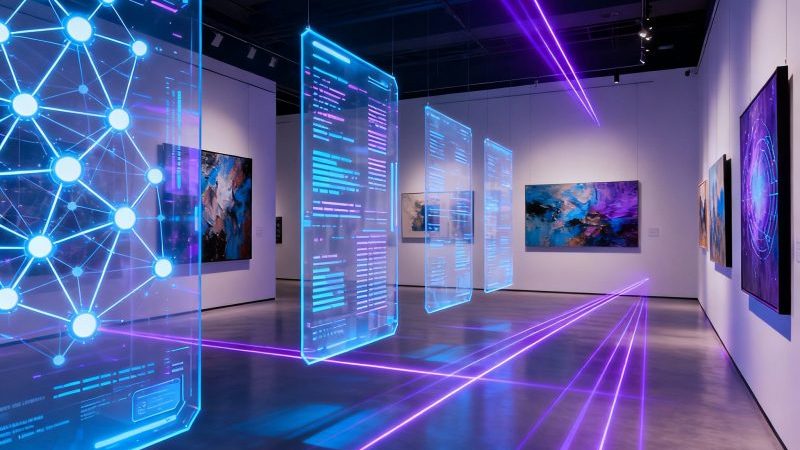The Evolution of Barcodes

Normal Joseph Woodland and Bernard Silver invented barcodes in 1951, but they became familiar worldwide after twenty years, especially in the grocery industry. They enable suppliers and retailers to manage their items better. When the series of thick and thin black lines are scanned, it retrieves product information. Each line can be read by a barcode scanner equipped with a light that reads and sends the digital code to the software.
UPCs (Universal Product code) are barcodes that alternate between black and white lines. The lines are machine-readable, with digital numerals below them. Later versions paired the lines with other patterns, such as rectangles, dots, and hexagons, to produce 2D barcodes. These varieties can be read using a camera-equipped mobile device, such as a smartphone. They can be seen on a wide range of products from many industries. According to reports, the majority of the top 500 corporations were employing barcodes regularly by 2004.
Multiple Uses
Across many industries, barcodes are applied for various reasons. When a customer checks out at a grocery store, an item is scanned. The barcode reader sends a description and a price to the cashier, allowing you to charge the buyer.
They can also provide data to the accounting department of a company. The barcode is associated with a sale amount when orders are placed. The accounting software will keep track of how many items were purchased.
A Barcode reader in a warehouse allows a company to perform an inventory count and monitor the path a product takes from the moment it arrives to the time it goes out, providing more accuracy than counting goods manually and entering in digits – both of which are vulnerable to inaccuracy.
Benefits
- Eliminate human error, such as miscounting goods or entering figures by hand.
- Accurate, real-time data — inventory counts are updated as soon as a transaction is completed.
- Ease of use — enter data by pointing and clicking.
- It’s also simple to make them.
- Scanning products is a quick operation, which saves time. Consider how quickly a salesperson can use a scanner to ring up a basket full of groceries at the checkout counter.
Set-up
Companies do not paste barcodes on their products at random with any digits they like. A standard system assigns a number to a product that will remain the same regardless of where it is shipped. A corporation must first register with the Global Standards Organization to manufacture barcodes for its products.
The company will be granted its own manufacturer’s number, which will make up the first six numbers in their UPC, once they have registered. The rest of the number refers to the specific product.
For each sort of product, most businesses will create a unique barcode. If you have two pairs of pants in different sizes, each size will be given its number. Companies must avoid duplicating number series.
The last number in the series is a verifier, which tells the scanner if the code was correctly scanned.
Because a UPC barcode is universal, a user may use it to search an item online and compare the costs charged by different companies for the same goods. For example, if you wanted to buy candy, you could use the UPC number to find the exact at any internet site and compare pricing.
However, this is not the case with SKU numbers, which are unique to a single retailer and contain only relevant information to that company.
Inventory
Scanning a code on a product enters an inventory system, which stores information such as the item’s manufacturing or assembly date, description, and location. These inventory management systems enable a company to follow a product’s journey from when it leaves the supplier to the warehouse, storage location, sales order, and delivery to the end-user (retailer).
It’s critical to keep track of products by code to keep track of inventory and stay profitable. Knowing when to reorder from suppliers to avoid running out of stock and avoid over-ordering, resulting in deadstock, is vital to operate with the lowest possible investment. Most of a manufacturer’s or wholesaler’s funds are invested in inventory, and many work on razor-thin profit margins.
Types
Because a UPC is solely made up of vertical lines, it is referred to as a 1D or one-dimensional bar code.
A 2D bar code, also known as a two-dimensional bar code, combines lines with other geometric patterns to represent more information than a one-dimensional bar code. They give URLs, photos, pricing, and more in addition to the staples of type, size, and color.
Nowadays, one may be found on almost every product. There is no way to tell where a product has been or when your inventory is low or overstocked on an item without them. The capacity to track products and determine inventory numbers in real-time allows a company to control expenses, stay profitable, meet demand, and eliminate waste. Tracking also enables the company to find recalled products.
While barcodes are essential nowadays, they have allowed businesses to manage many aspects of their operations while also maintaining control over growth and consumer satisfaction.






